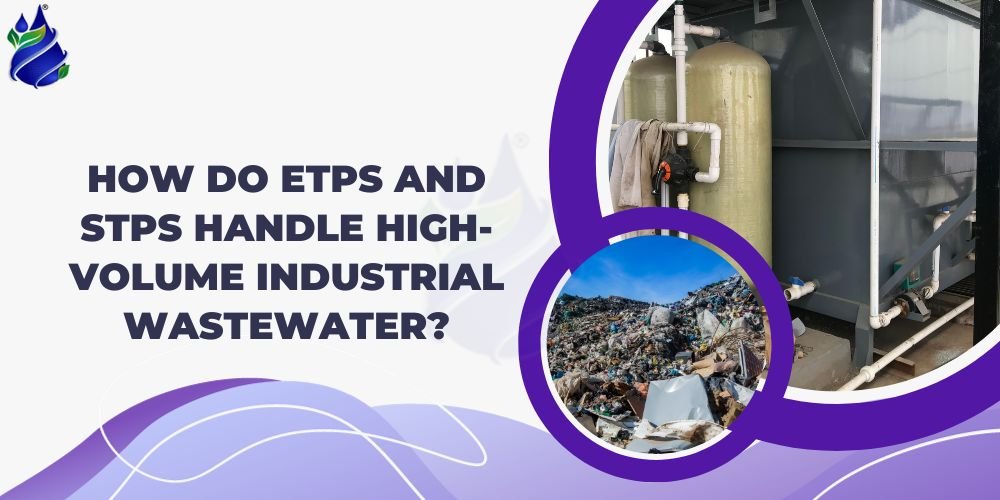
Introduction
Industries rely heavily on wastewater treatment plants to manage and treat the effluents produced during production. There are various reasons these plants are essential. They reduce environmental contamination, to start. Wastewater from industrial processes contains dangerous chemicals, heavy metals, and other pollutants. If this wastewater is released into the environment untreated, it can contaminate natural water sources and hurt ecosystems and public health. By eliminating or lowering these pollutants, wastewater treatment facilities provide cleaner effluents for disposal or possible future use. Furthermore, these plants aid in conserving water. Wastewater can be safely reintroduced into water systems or reused within the industry for non-potable uses like irrigation or cooling by methods like filtering, biological treatment, and disinfection. By reducing the demand for freshwater resources, this approach fosters sustainability.
Furthermore, enterprises must adhere to environmental restrictions. Wastewater treatment plants ensure companies comply with regulations and discharge limitations imposed by authorities. This helps them avoid paying penalties, facing legal action, and suffering reputational harm from noncompliance. In the end, industrial wastewater treatment facilities serve as the cornerstones of ethical environmental stewardship. They are essential to sustainable industrial operations because they maintain public health, protect ecosystems, and conserve water supplies.
What is STP and ETP?
Important systems like STPs (sewage treatment plants) and ETPs (effluent treatment plants) are made to handle various wastewater kinds for a range of uses.
Sewage Treatment Plant
Treating domestic sewage from homes, businesses, and institutions is the main objective of sewage treatment plants (STPs). Screening, primary settling, biological treatment (using trickling filters or activated sludge process), and disinfection are some of the steps involved in removing contaminants and pathogens from wastewater before it is released into natural water bodies or used again for non-potable uses. The intention is to stop the spread of waterborne illnesses and make sewage healthy for the environment.
Effluent Treatment Plant
ETP, on the other hand, deals with industrial effluents, taking care of the unique pollutants and complications related to industrial wastewater. Industries produce effluents that are contaminated with a variety of substances, including oils, chemicals, heavy metals, and organic compounds. To remove or reduce these pollutants, ensure environmental regulations are followed, and stop environmental degradation, ETPs use specialized treatments like chemical coagulation, sedimentation, biological treatments, and cutting-edge methods like membrane filtration or reverse osmosis.
How do ETPs and STPs handle high-volume industrial wastewater?
Because industrial wastewater is complicated and contains a variety of pollutants, ETPs and STPs encounter distinct obstacles when managing large volumes of wastewater. High-volume industrial wastewater management calls for the use of many crucial tactics:
- Pre-treatment Procedures: Using techniques including screening, sedimentation, and filtering, ETPs use pre-treatment procedures to get rid of big particles, oil, grease, and other visible impurities. This stage guarantees a more refined and controllable effluent for the treatment stages that follow.
- Advanced Treatment Technologies: Complex contaminants such heavy metals, hazardous chemicals, and organic compounds are frequently present in high-volume industrial wastewater. To efficiently treat and eliminate these contaminants, ETPs make use of cutting-edge treatment technologies such chemical coagulation, biological treatments, membrane filtration, and ion exchange.
- Customization and Optimization: ETPs modify their treatment protocols in accordance with the unique characteristics of industrial wastewater. To effectively remove contaminants from wastewater, customization entails modifying pH levels, temperature, and treatment sequences to suit the specific composition of the wastewater.
- Compliance and Monitoring: Ensuring adherence to environmental standards requires routine monitoring of effluent quality. In order to ensure compliance with discharge regulations and reduce their negative effects on the environment, Effluent treatment plants (ETPs) conduct ongoing analysis and testing.
- Resource Recovery: Valuable materials may be present in some large-volume industrial wastes. To promote sustainability and lessen their environmental impact, ETPs may integrate resource recovery technology to collect water, extract usable compounds, or produce electricity from the effluent.
Conclusion
We at Trity Enviro Solution are manufacturers of commercial and industrial RO plants, sewage treatment plants, Sequencing Batch Reactors, water softener plants, effluent active sludge systems and effluent treatment plants. We have years of business experience and the trust of our clients. Please contact us at enquiry@trityenviro.com or +91 9821030072 if you need any help setting up a water treatment plant.


